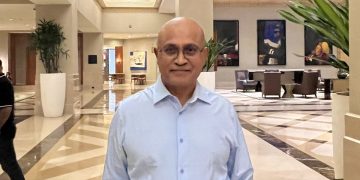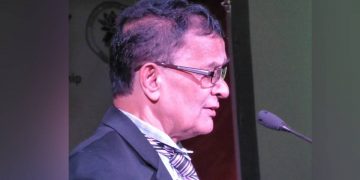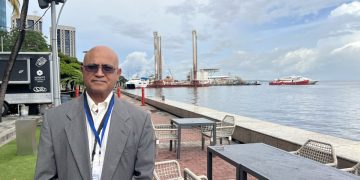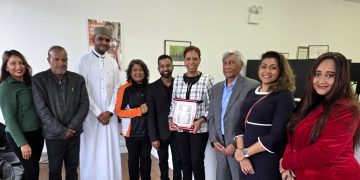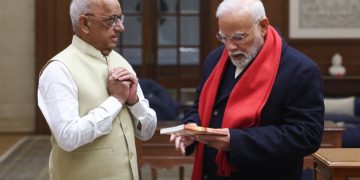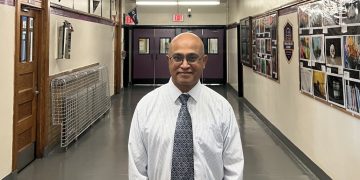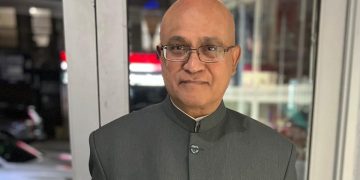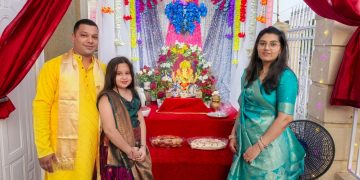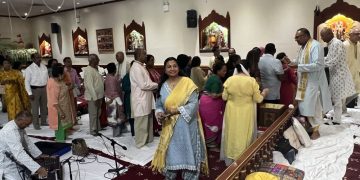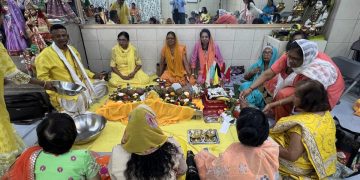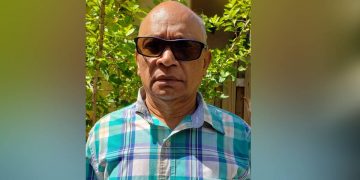In 1964, politically-instigated racial turmoil raged throughout British Guiana (now Guyana) as the Caribbean/South American country prepared for independence. Accompanied by rioting, strikes had erupted in 1962 and 1963, and in 1964, violence had been escalating since the commencement of the sugar workers’ strike that began in February of that year. Even so, the extent of the atrocities that took place in Wismar three months later was unprecedented.
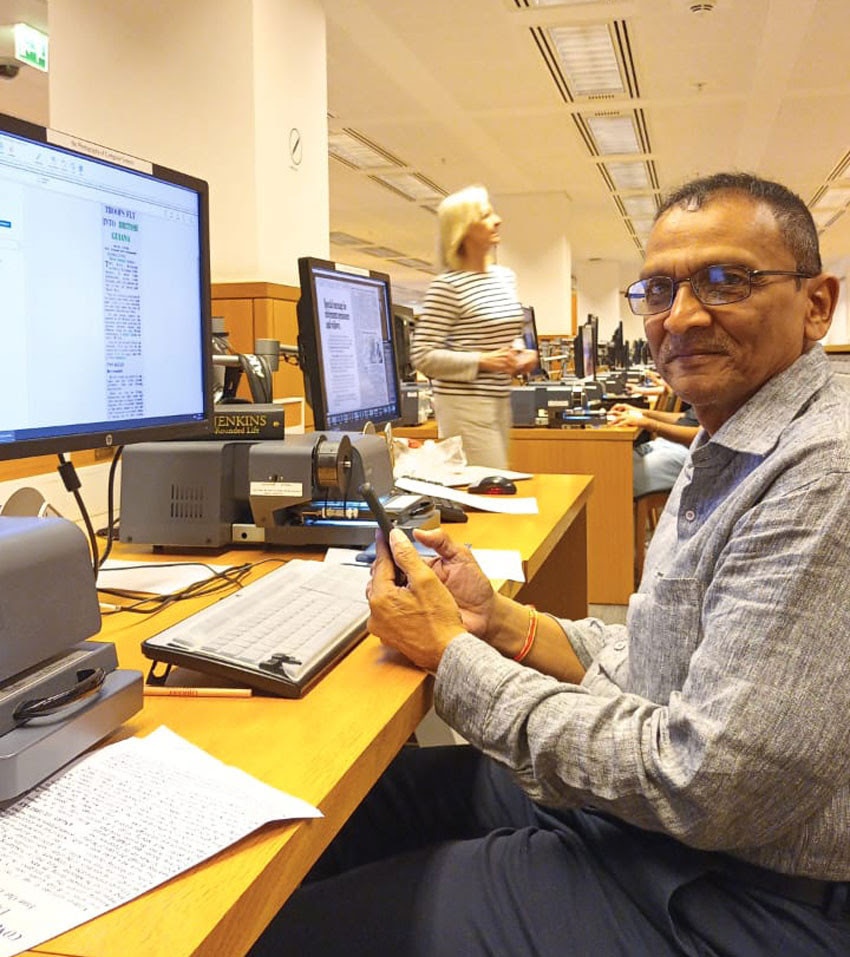
Wismar/Christianburg/Mackenzie was a bauxite mining community situated astride the Demerara River about 90 kms south of the capital of Georgetown. Its population of 18,000 consisted mostly of Africans, 3,000 Indians (of South Asian origin), and a smattering of other ethnicities. For the most part, it was an ethnically harmonious district. But over a four-day period in May 1964, racial violence erupted as Africans drove Indians out of the area in an orgy of arson, beatings, rapes and murders. Practically all 3,000 Indians – men, women and children – were forced to flee for their lives to Georgetown, carrying whatever meagre possessions – if any – they had been able to grab.

The Wismar atrocities did not take place in a vacuum. There is copious material about its external, political causes (such as US, UK and possibly Cuban interference as well as local conflict). However, relatively little has been written on the Wismar ethnic cleansing atrocity itself. I had begun research on the subject two years ago and have recorded interviews with some of the victims and bystanders. The Eccles Centre for American Studies Visiting Fellowship in July allowed me to expand my research. The British Library Staff was kind, courteous and helpful as well Dr. Polly Russell and Dr. Philip Abraham of the Eccles Centre for American Studies at the British Library Visiting Fellowship Programme.
Searching through the British Library’s Sound and Moving Image Catalogue for possible audio of first-hand accounts, I found just one, like a gem – that of the Reverend Reginald Mitchell in which he described witnessing the tragedy. Rev. Mitchell was a Scottish Methodist minister who, together with his wife Erica, had been living in the region for some years, ministering to the mining community. He recalled how the Africans ‘drove the Indians out of the mining area’, describing it as ‘terribly traumatic’ and as having ‘left its indelible mark on some of us’. Mitchell described a period of about two weeks where he was ‘out every afternoon burying people’. This recollection challenges the official record of only three Indians having been killed, and two Africans dying while looting property.

Newspapers provide insightful snapshots of events and opinions, so I turned to the Newsroom with its huge archive to look at historical reports, both Guianese and British. Many articles in Guianese newspapers reported the Wismar atrocity – even in the midst of continuing violence elsewhere. They described a people who felt they had been inadequately protected by security forces, of British troops patrolling Wismar, and of the Governor’s meeting with evacuees. They described people around the country travelling miles to visit the refugees and offer them gifts of goods and money at the improvised camp in Georgetown, or of others who came out of curiosity and were accused by a magistrate of ‘loafing’ as he fined them, hoping to deter others who just wanted to ogle. Opinion pieces expressed horror and pleaded for peace. They reported how leaders of political parties organised relief funds for victims, and how the Canadian mining company, Demba, posted information on how refugee workers can access pay for work through the company’s Georgetown office, or through a Georgetown bank.
The British Library computer search portal Gale Primary Sources database consists of newspapers and periodicals from the UK . The Daily Telegraph of May 23rd 1964 recorded the killing of the ‘negro farmer and his wife in East Coast Demerara’ believed to have triggered events in Wismar. The Sunday Times (May 24) announced the expected arrival of British troops, and on May 26th, printed its first report of the Wismar atrocity. TheDaily Mail on May 27th recounted the arrival of some of the evacuees in Georgetown while The Times described their sorry condition: ‘Some had no time to collect anything at all…. Some children carried their cats, one a birdcage, and several had large radio sets tucked under their arms’. The same piece observed: ‘It has been a consistent pattern of this tragic series of events that an attack on a minority group in one part of the country is followed by reprisals in another part where that group is dominant’.
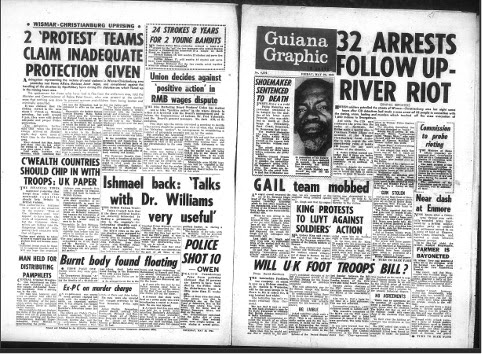
The wounds of 1964 still run deep in present-day Guyana, but the Wismar Ethnic Cleansing Atrocity is one tragedy that is often neglected. Interrogating the historical records of the event helps to ensure that the experiences of those on the margins can be brought to the centre of the conversation on how Guyana creates its future.
References:
Cheddi Jagan, British Guiana’s future: Peaceful or violent? People’s Progressive Party Publication, 1963.
Interview with Rev. Reginald Mitchell. British Library, Sound and Moving Image shelfmark: C640/076/01-02, 1995.
Guiana Graphic , shelfmark SL1K_20230720155427. May 28 / May 29 1964.
DR. KUMAR MAHABIR is a Senior Lecturer in the Department of Language and Cultural Studies at the University of Guyana (UG) in the Caribbean, and a Research Fellow of The Eccles Centre for American Studies – British Library.















